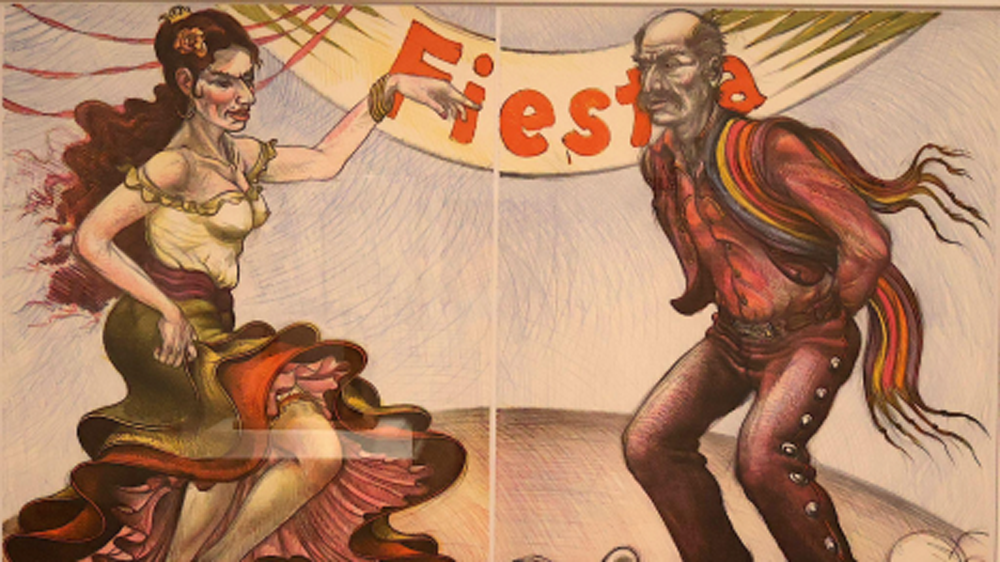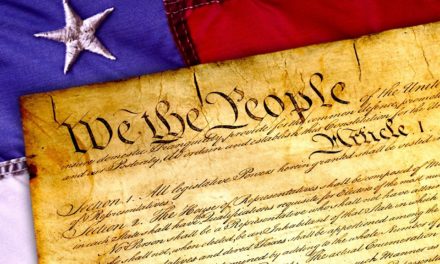The San Antonio Museum of Art [SAMA] exhibit, Lovers & Fighters: Prints by Latino Artists in the SAMA Collection, offers a radiant visual perspective of “love, power, and resistance.” The show brings together eleven exceptional works by Latino artists that portray “romantic couples, heart motifs, boxers, and wrestlers which evoke the concept of lovers and fighters.”
The San Antonio Museum of Art is one of the newer museums in Texas, opening in 1981 after a ten-year major renovation project devoted to converting the late 19th century Lone Star Brewing building into a museum. The Museum made national news in 1985 when former Vice President Nelson A. Rockefeller and Robert K. Winn donated one of America’s finest collections of Latin American Folk Art to the museum. SAMA’s interest in Latin American art contributes to their interest in Chicano and Latino art.
In the spirit of full disclosure, Harriett and I are pleased to have donated 475 Chicano and Latino prints to SAMA over the past fifteen years. Nine of the ten prints featured in this exhibit are from our collection including work by Vincente Valdez, Santa Barraza, Terry Ybanez, Luis Jiménez, Richard Duardo, Ricky Armendariz, Melanie Cervantes, Juan De Dios Mora, and Delilah Montoya. UCLA’s Wright Art Gallery donated an art print by California artist Ester Hernandez.
Exhibit curator Lana Meador notes that the exhibit brings together “artists’ depictions of familial bonds, spiritual devotion, gender and sexuality, political activism, reverence for cultural leaders, and the celebration of cultural heritage [that] enrich our understanding of affection and struggle.” Several artists hail from San Antonio and their work is well known in the art community.
Artist, art educator, and community activist Terry Ybanez grew up in San Antonio’s westside and attended Trinity University and the University of Texas San Antonio. She began her art career at age 15 as an art assistant at Southwest School of Art. After graduating from college, she taught art at Brackenridge High School. Ybanez has incorporated feminist themes in many of her works. She explained to La Prensa last year: “Latina women have a history of being an alien in their own nation. In the past women were not allowed to vote, own property, have certain jobs, or have an abortion.”
In her artwork, “Cutting Tongues” [1996], Terry Ybanez addresses the struggle of children and young teens to preserve their language and culture. She lamented, “Why do we lose our mother tongue, the language [we are] are born into? My mother tongue is Spanish.” She explained that she lost some language skills in the 1960s when teachers prohibited students from speaking Spanish at school. Her teachers also told her bilingual parents to speak only English to their children at home. She added, “This always confused me since my abuelos [grandparents] spoke to us in Spanish. I loved listening to their stories in Spanish, their instructions in Spanish, and even their scoldings in Spanish.”
Another well-known Texas artist, Santa Barraza, is a native of Kingsville and began her art training at Texas A&M at Kingsville. Because her local college did not offer a Bachelor of Arts degree in fine arts, she transferred to the University of Texas at Austin. There she enrolled in classes taught by Jacinto Quirarte, author of the pioneering book, Mexican American Artists.
In the book Santa Barraza: Artist of the Borderlands edited by Maria Herrera-Sobek, Barraza explains her ideas behind the painting in the exhibit, “Cihuateteo.” Barraza studied pre-Columbian history and anthropology and learned of an Aztec legend referred to as Cihuateteo which was identified as the spirits of pregnant women who died in childbirth. Upon death, the women immediately became warriors because the Aztec priests believed they lost their lives in battle. Barraza interpreted the loss of life represented in that work as “the struggle in life to produce a new life for the empire.” SAMA curators added, “One such ‘divine woman’ is at the center. Standing is the Virgin of Guadalupe, the Patroness of the Americas, and a symbol of cultural and religious syncretism.”
In many paintings, Barraza’s subjects and themes deal with her identity which she saw as dominated by an upbringing in a bilingual and bicultural community. In the mid-1980s, Barraza told art historian Shifra M. Goldman that her artwork had “been influenced by the Chicano movement of the late sixties and early seventies,” as well as by “culture, historical background, the Mexican muralists, and shamanism.”
Luis Jiménez, one of the best-known Chicano artists of our times, has a large colorful print of two dancers in the SAMA exhibit. Jiménez grew up in El Paso and lived his last 25 years in Hondo, New Mexico. If there is anything consistent about Jiménez’s work, it is that his work evokes controversy. His Vaquero sculpture was viewed as too violent because the Vaquero [cowboy] had a pistol raised high above his head. His Southwest Pieta with a Mexican Indian holding an Indian maiden in his lap was viewed as too Mexican or insufficiently Spanish by the Hispano community of Albuquerque. Soon after creating a 50-foot bronco sculpture with bright red eyes at the Denver Airport critics proclaimed it too scary and haunted.
Jiménez’s “Jarabe” print in the SAMA show originated with a 1985 U.S. General Service Administration commission for a fiesta sculpture at the Otay Mesa border station near San Diego, California. In 1985, Jiménez produced five Jarabe sculptures and created a series of lithographic prints. The “Jarabe” print in the SAMA exhibit shows a couple dancing the traditional Mexican hat dance. Critics claimed the woman’s dress was Spanish, not Mexican, and argued the dress was too tight. Others criticized the man for being too dark. Jiménez countered by saying he was showing “real people in a real situation,” according to the Smithsonian American Art Museum website.
El Paso Community College Librarian Ruth Vise found a quote by Jiménez in a Los Angeles Times article in which the artist offered that his sculpture was “Not cute. … It’s not a Disneyland version.” Vise wrote, “Other sculptures by Jiménez have had negative criticism leveled at them, but cities kept commissioning the huge pieces and he kept making them.” Jiménez never attempted to paint pretty faces. He worked with fiberglass, a difficult medium, but always strove to make the human figures realistic.
The theme “Lovers and Fighters” is evident in the works by Vincent Valdez and Delilah Montoya. Valdez, a native of San Antonio, now lives in Los Angeles. Over the years he has produced a series of superb drawings and prints related to boxing. The SAMA curator noted, “Valdez often explores the subject of boxers in his work as symbols of masculinity.” Boxing is a popular sport with many Latinos, especially men. Curator Meador concluded that Valdez addresses “racial justice in his artwork, and his boxers embody the socio economic hardships of young men of color.”
Delilah Montoya’s print, “Smile Now, Cry Later,” portrays another fighter, Terri “Lil Loca” Lynn Cruz, the International Female Boxers’ Association Bantamweight Champion. SAMA curator Meador explained, “Defying traditional roles, Montoya sees women boxers as warriors who do not conform to societal expectations.”
Visitors to SAMA’s exhibit Lovers & Fighters: Prints by Latino Artists will learn about some of the major artists of the Latino community. The ten prints in the exhibit are a small sample of the growing SAMA collection. Art lovers can hopefully look forward to more exhibits providing insights into the expanding












